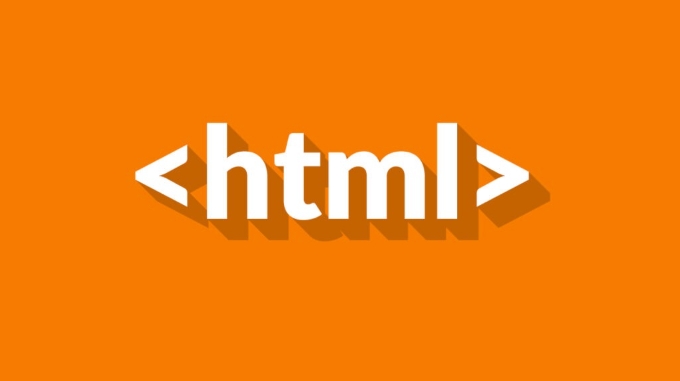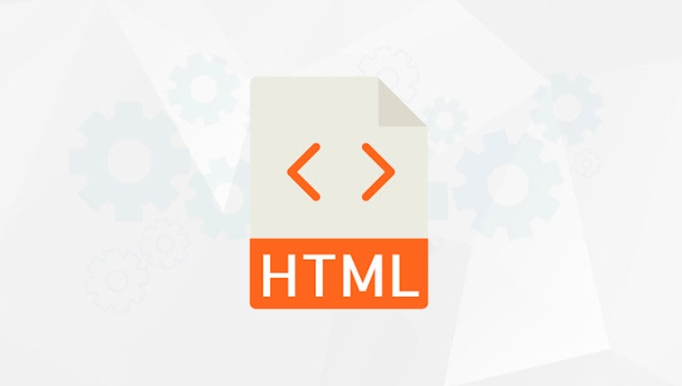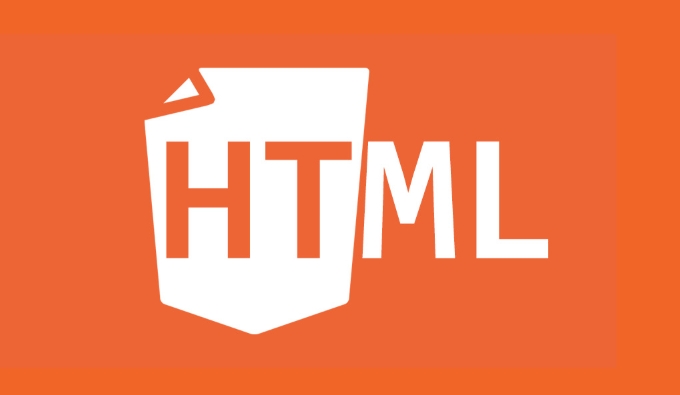Using HTML template tags as client templates is a lightweight, dependency-free dynamic content insertion scheme. 1. template is a lazy container introduced by HTML5, and the internal content will not be parsed or rendered; 2. Get and clone its content through JavaScript, fill in the data and insert it into the DOM, which is suitable for repeated structures such as user lists; 3. Manually handle scripts, styles and data bindings when used; 4. It is suitable for small projects or low-complexity components, while large projects are recommended to use frameworks such as React/Vue instead.

Using HTML template tags as client templates is actually a very practical but easily overlooked approach. It does not render content by itself and is suitable for storing structural fragments that require dynamically inserting the page.

What is template tag?
template is a tag introduced in HTML5, specifically used to store "lazy" content. In other words, the HTML written in it will not be parsed or executed by the browser, nor will it affect the page layout.
For example:

<template id="user-card">
<div class="card">
<h3>{{name}}</h3>
<p>{{email}}</p>
</div>
</template>This code won't appear on the page, but you can take it out through JavaScript, fill in the data and insert it into the DOM. This is very useful for structures that require repeated renderings, such as user lists, comment items, etc.
How to use template as client template?
First, you need to get the contents of template element from the DOM and then copy a copy of the node to operate.

The steps are roughly like this:
- Get the template element
- Cloning its content (because the original content cannot be directly manipulated)
- Replace placeholder content (can be replaced with strings or more complex binding methods)
- Insert into the page
A simple example:
const template = document.getElementById('user-card'); const clone = template.content.cloneNode(true); clone.querySelector('h3').textContent = 'Zhang San'; clone.querySelector('p').textContent = 'zhangsan@example.com'; document.body.appendChild(clone);
This approach does not require the introduction of an additional template engine library, which is suitable for lightweight needs.
Things to note when using template
Although it is simple and easy to use, there are some details that need to be paid attention to:
- Only static content is supported : scripts and styles in
templatewill not take effect automatically unless you process it manually. - Cannot be used in nested : Some browsers may not support nested
templatewell. - There is no built-in data binding mechanism : you need to implement variable replacement logic yourself, such as using regular or string templates.
If you just want to quickly render a few pieces of data, you can use some simple replacement functions to enhance the functionality, such as:
function renderTemplate(id, data) {
const template = document.getElementById(id);
let html = template.innerHTML;
for (const key in data) {
html = html.replace(new RegExp(`{{${key}}}`, 'g'), data[key]);
}
const div = document.createElement('div');
div.innerHTML = html;
return div.children[0];
}This will simplify the process a little.
Applicable scenarios and alternative solutions
template is more suitable for small projects or places where componentization requirements are not high. If your project already uses frameworks such as React and Vue, there is no need to use this anymore. Their own components and template systems will be more powerful.
But if you just want to make a gadget, plug-in, or static page and don't want to introduce too many dependencies, then template is a good choice.
Basically that's it.
The above is the detailed content of HTML `template` Tag for Client-Side Templating. For more information, please follow other related articles on the PHP Chinese website!

Hot AI Tools

Undress AI Tool
Undress images for free

Undresser.AI Undress
AI-powered app for creating realistic nude photos

AI Clothes Remover
Online AI tool for removing clothes from photos.

Clothoff.io
AI clothes remover

Video Face Swap
Swap faces in any video effortlessly with our completely free AI face swap tool!

Hot Article

Hot Tools

Notepad++7.3.1
Easy-to-use and free code editor

SublimeText3 Chinese version
Chinese version, very easy to use

Zend Studio 13.0.1
Powerful PHP integrated development environment

Dreamweaver CS6
Visual web development tools

SublimeText3 Mac version
God-level code editing software (SublimeText3)
 Applying Semantic Structure with article, section, and aside in HTML
Jul 05, 2025 am 02:03 AM
Applying Semantic Structure with article, section, and aside in HTML
Jul 05, 2025 am 02:03 AM
The rational use of semantic tags in HTML can improve page structure clarity, accessibility and SEO effects. 1. Used for independent content blocks, such as blog posts or comments, it must be self-contained; 2. Used for classification related content, usually including titles, and is suitable for different modules of the page; 3. Used for auxiliary information related to the main content but not core, such as sidebar recommendations or author profiles. In actual development, labels should be combined and other, avoid excessive nesting, keep the structure simple, and verify the rationality of the structure through developer tools.
 How to group options within a select dropdown using html?
Jul 04, 2025 am 03:16 AM
How to group options within a select dropdown using html?
Jul 04, 2025 am 03:16 AM
Use tags in HTML to group options in the drop-down menu. The specific method is to wrap a group of elements and define the group name through the label attribute, such as: 1. Contains options such as apples, bananas, oranges, etc.; 2. Contains options such as carrots, broccoli, etc.; 3. Each is an independent group, and the options within the group are automatically indented. Notes include: ① No nesting is supported; ② The entire group can be disabled through the disabled attribute; ③ The style is restricted and needs to be beautified in combination with CSS or third-party libraries; plug-ins such as Select2 can be used to enhance functions.
 Implementing Clickable Buttons Using the HTML button Element
Jul 07, 2025 am 02:31 AM
Implementing Clickable Buttons Using the HTML button Element
Jul 07, 2025 am 02:31 AM
To use HTML button elements to achieve clickable buttons, you must first master its basic usage and common precautions. 1. Create buttons with tags and define behaviors through type attributes (such as button, submit, reset), which is submitted by default; 2. Add interactive functions through JavaScript, which can be written inline or bind event listeners through ID to improve maintenance; 3. Use CSS to customize styles, including background color, border, rounded corners and hover/active status effects to enhance user experience; 4. Pay attention to common problems: make sure that the disabled attribute is not enabled, JS events are correctly bound, layout occlusion, and use the help of developer tools to troubleshoot exceptions. Master this
 Configuring Document Metadata Within the HTML head Element
Jul 09, 2025 am 02:30 AM
Configuring Document Metadata Within the HTML head Element
Jul 09, 2025 am 02:30 AM
Metadata in HTMLhead is crucial for SEO, social sharing, and browser behavior. 1. Set the page title and description, use and keep it concise and unique; 2. Add OpenGraph and Twitter card information to optimize social sharing effects, pay attention to the image size and use debugging tools to test; 3. Define the character set and viewport settings to ensure multi-language support is adapted to the mobile terminal; 4. Optional tags such as author copyright, robots control and canonical prevent duplicate content should also be configured reasonably.
 Best HTML tutorial for beginners in 2025
Jul 08, 2025 am 12:25 AM
Best HTML tutorial for beginners in 2025
Jul 08, 2025 am 12:25 AM
TolearnHTMLin2025,chooseatutorialthatbalanceshands-onpracticewithmodernstandardsandintegratesCSSandJavaScriptbasics.1.Prioritizehands-onlearningwithstep-by-stepprojectslikebuildingapersonalprofileorbloglayout.2.EnsureitcoversmodernHTMLelementssuchas,
 How to associate captions with images or media using the html figure and figcaption elements?
Jul 07, 2025 am 02:30 AM
How to associate captions with images or media using the html figure and figcaption elements?
Jul 07, 2025 am 02:30 AM
Using HTML sums allows for intuitive and semantic clarity to add caption text to images or media. 1. Used to wrap independent media content, such as pictures, videos or code blocks; 2. It is placed as its explanatory text, and can be located above or below the media; 3. They not only improve the clarity of the page structure, but also enhance accessibility and SEO effect; 4. When using it, you should pay attention to avoid abuse, and apply to content that needs to be emphasized and accompanied by description, rather than ordinary decorative pictures; 5. The alt attribute that cannot be ignored, which is different from figcaption; 6. The figcaption is flexible and can be placed at the top or bottom of the figure as needed. Using these two tags correctly helps to build semantic and easy to understand web content.
 How to embed content from another site using the html iframe tag?
Jul 04, 2025 am 03:17 AM
How to embed content from another site using the html iframe tag?
Jul 04, 2025 am 03:17 AM
Use tags to embed other website content into your own web page. The basic syntax is:, you can add width, height, and style="border:none;" to control the appearance; in order to achieve responsive layout, you can set the size through percentage or use containers to combine padding and absolute positioning to maintain the aspect ratio, while paying attention to cross-domain restrictions, loading performance, SEO impact, and security policies. Common uses include embedding maps, third-party forms, social media content and internal system integration.
 HTML for email templates tutorial
Jul 10, 2025 pm 02:01 PM
HTML for email templates tutorial
Jul 10, 2025 pm 02:01 PM
How to make HTML mail templates with good compatibility? First, you need to build a structure with tables to avoid using div flex or grid layout; secondly, all styles must be inlined and cannot rely on external CSS; then the picture should be added with alt description and use a public URL, and the buttons should be simulated with a table or td with background color; finally, you must test and adjust the details on multiple clients.






